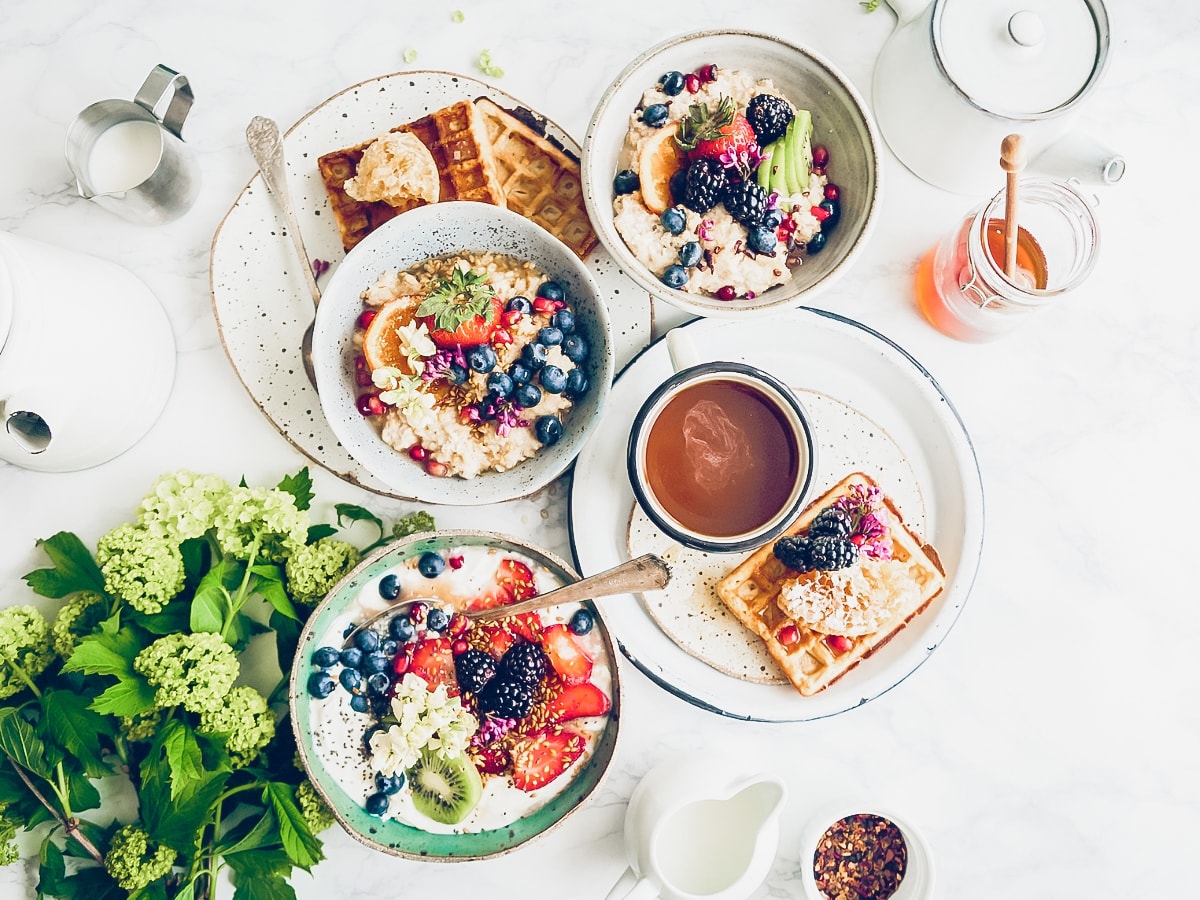Your Cart is Empty
Free Shipping on All Orders Over $50
Free Shipping on All Orders Over $50

General Nutrition Awareness
July 23, 2021 4 min read
Ah, “nutrition.” We’ve heard a million contradictory rules surrounding food and diet over the years, but recent studies seem to be finally pointing us in the right direction. And while I’m no expert nutritionist, I’ve been doing some research to figure it out.
Whether you’re new to the world of nutrition or could use a refresher course, here’s some general nutrition guidelines we can all use to be healthier versions of ourselves:
Breaking Down Our Food
Food, at its most basic, can be broken down into three categories: fats, proteins, and carbohydrates. Unless you’re on a specific diet under the guidance of a doctor or nutritionist, you should be consuming all three of these “macronutrients” in the following percentage ranges:
- 45-65% carbs
- 20-35% fats
- 10-35% protein
It’s important to note that while these tend to be the normal recommendations, these aren’t hard-and-fast rules for everyone.
I’m personally a big fan of “intuitive eating,” which is eating healthy foods I want to eat (when I want to eat them), enjoying occasional treats instead of restricting, and respecting my body’s signals when they tell me I’m full. Doing this doesn’t always land me in these exact percentages, but most days, it does!
Why You Need Carbs, Fats, AND Protein

A lot of fad diets will encourage you to cut one of these macronutrients entirely. (Usually, it’s carbs that get the axe.) But there’s a reason these fad diets often lead us into yo-yo dieting. Our bodies need the proper ratio of macros.
Why?
Each of these macros play an important part in the functioning of our bodies:
- Carbohydrates provide the body with energy.
- Fats keep you feeling satiated.
- Proteins build and repair muscles.
Even if you’re looking to lose weight, you need all three. Carbohydrates provide the “quick energy” you need for metabolism-boosting high-intensity workouts, proteins help you build lean muscle, and fats increase your absorption of certain vitamins and keep you feeling full (which means less snacking!).
While cutting one of these might lead to quick, short-term weight loss, you can see how eliminating one could completely undermine your efforts overtime, leaving you feeling tired, unable to build muscle effectively, or constantly hungry.
Great. But What Do I Eat?
It can be really frustrating to constantly be researching macros and reading food labels. While many foods contain carbs, fats, and protein, they usually are a truly substantial source of one. Here’s some general groups to keep in mind.
Carbs:Fruits, vegetables, bread, grains, oats, pasta, and rice.
Protein:Lean meats and fish, Greek yogurt, egg whites, and cottage cheese.
Fats: Nuts, oils, olives, avocados, and flaxseed.
Of course, you’ll find crossovers (beans belong to both the carb and protein categories, and whole milk is in between protein and fats.)
What you don’t see in the groups above are highly processed foods. While they – like every other food – can be broken down into their macronutrients, they tend to contain added sugars, hydrogenated oils, and saturated fats.
And sure, we all know that those packages of cupcakes aren’t good for us, but some foods are very, very sneaky when it comes to what they contain…and their calorie count. Seemingly “healthy” cereals, granola bars, spaghetti sauce, ketchup, salad dressings and more can contribute lots of extra sugar (and calories) to your food intake throughout the day. Fatty cuts of meat, bacon, cheese, and more contain saturated fats (which can cause cholesterol to build up and block your arteries).
It’s unreasonable to think you’ll never eat a dessert again or enjoy an occasional fast-food trip. However, it’s important to understand that while brownies and apples would both be categorized as “carbs,” they will cause very different long-term effects on the body.
What’s the Deal with Calories?

Calories have gotten a bad rap over the years, and we tend to get worked up about them. However, what we need to remember is that they’re just a measure of energy. If you burn more energy than you take in (if you burn more calories than you eat), then your body has to make up for the deficit somehow, and it does this by breaking into your fat stores. That’s how you lose weight, and vice versa if you want to gain weight. (If you want to stay the same weight, you aim for that sweet spot of balance).
So, just eat as little as possible to lose weight?
Nope! (I’ll explain.)
For a long time, we thought just severely cutting calories was the way to go when it came to slimming down. I remember a time when all you could find online about weight loss and calories was that people should eat 1200-1600 calories if they were trying to lose weight. (Thank goodness we’re past that, am I right?).
In reality, if you don’t eat enough calories, your body could think you’re close to starvation, and it’ll start holding onto fat with everything it’s got (to stop you from starving) while also slowing your metabolism.
Yes, it’s annoying. But it’s also a very important self-preservation instinct. Without enough food, your body doesn’t trust that more is on the way, and it will try to slow your use of energy to extend your lifetime in a starvation situation.
So, what’s a good rule of thumb if you’re looking to lose weight?
Eat 500 (not 1000!) calories less than you need to maintain your weight each day. For most moderately active women, this puts you at about 1500 calories a day (around 2000 for maintenance). This will put you on the path to losing a pound a week. However, exercise, height, weight, and more will all change your calorie needs. If you want to see the best results possible, it’s a good idea to talk to a doctor or nutritionist to get a personalized plan.




